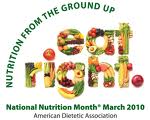 Higher fat foods such as whole milk and whole fat dairy foods are recommended over lower fat foods– that is, until the age of two. After turning two, dropping the fat content of the diet from 30-50% of total calories to a maximum of 30% is best. Why the switch? During the first two years of life, fat is crucial to support the rapid growth and development that is occurring, particularly of the nervous system. Myelin, a fatty covering around nerves, is formed predominantly during the first two years of life and restricting fat too severely during these years can result in delayed motor skills and brain development.
Higher fat foods such as whole milk and whole fat dairy foods are recommended over lower fat foods– that is, until the age of two. After turning two, dropping the fat content of the diet from 30-50% of total calories to a maximum of 30% is best. Why the switch? During the first two years of life, fat is crucial to support the rapid growth and development that is occurring, particularly of the nervous system. Myelin, a fatty covering around nerves, is formed predominantly during the first two years of life and restricting fat too severely during these years can result in delayed motor skills and brain development.
After the age of two however, a higher fat content in the diet is no longer needed nor is it recommended. Excessive fat intake from this age on can result in a slew of health problems, including heart disease and obesity. The heart is affected because cholesterol levels rise with the intake of saturated fats, or fats that are solid at room temperature. Cholesterol is a waxy substance that travels in the bloodstream and can clog or block vessels if it builds up. Some fats, unsaturated fats such as those found in fish and olive and canola oils, can be beneficial to the heart but still shouldn’t equal more than 30% of daily calories. The relationship between a fatty diet and obesity comes from fat’s caloric density. Fat contains 9 calories per gram, more than any other nutrient. Good for fast growing babies, bad for older children and adults who can easily gobble up more than their daily caloric needs from high fat foods. The body, with its unbelievable waste-not-want-not ways, stores those excess calories as body fat, resulting in weight gain.
Bottom line – if you are above the age of two, wean down your fat intake, particularly the saturated fats. Keeping in mind Rule #1, that no foods are forbidden, the more often you eat a lower fat meal, the better.






